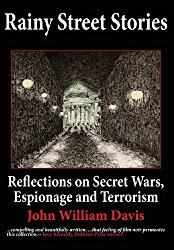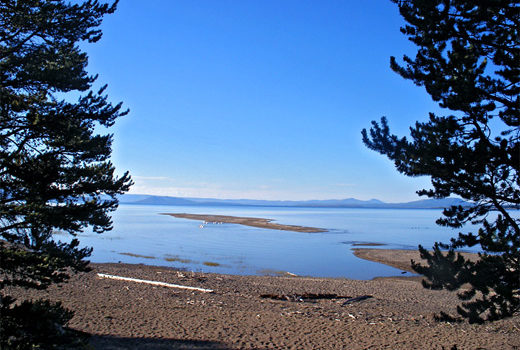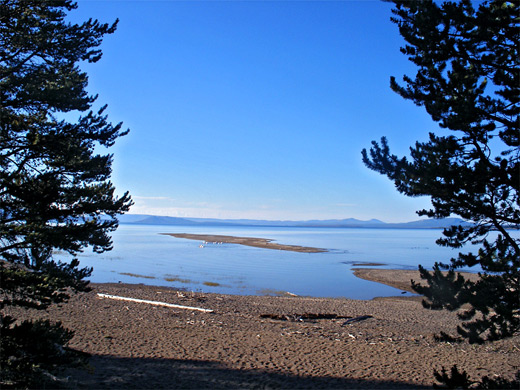The following story was written by MW Contributor John Davis and about his 3X great uncle, John Crittenden Davis …. Enjoy!
The mystery described below is the wonder of seeing today’s Yellowstone National Park region for the first time, long before it became the Park it is today. My 3X great uncle was one of the young explorers of the West of our country in the mid-1800s. John came back East and wrote about it for the Louisville, Kentucky, newspaper. This is what he said some years later (in italics). The first paragraph is from the National Parks’ Service. So, if you ever go to Yellowstone, know that Pelican Creek there was named by my relative!
One of the men who accompanied deLacy in 1863 returned to the Yellowstone region the following year. He was John C. Davis, a member of James Stuart’s 1864 expedition down the Yellowstone River to prospect the Bighorn and Stinkingwater (Shoshone) Rivers. Upon the breakup of that venture, a remnant of the party worked southward under the leadership of Adam “Horn” Miller. Six of these men eventually reached Jackson’s Hole, from which Davis and two others left for the Yellowstone region. Davis says, [91] according to the Louisville, Ky., Courier-Journal:
We came into the park just above the lake, and immediately found ourselves in the midst of the wonders of this enchanted land. The boiling springs and geysers were all around us, and, accustomed as we were to the marvels of Western scenery, we hardly knew what to think of the phenomena. Having visited this place the preceding year I was, however, less surprized than the others. We wandered along the shore for a while, and leaving the lake we went into camp about a mile and a half above the falls. The roaring of the great cataract reached us, but was barely discernible at this distance, and we were among so many wonders that we paid it little attention. After camping I took my gun and started out in the hope of finding an elk for dinner. I went down the bank, and in short time came to the Upper Falls. The full grandeur of the scene did not burst on me at once. Men who have engaged in a hand-to-hand struggle for a frontier existence lose sentiment after a few years; but when I realized the stupendous leap of water, I could not help being impressed. I stood gazing at it for a long time, and I remember estimating the height of the falls at only about 200 feet. [92]
I did not then think that I was the first white man to behold one of the greatest wonders of the Western world.
In the afternoon we crossed the river on our ponies. Going below we reached the Grand Canyon, along which we wandered for a short distance. I remember that we crept to the edge and looked over to where the river, a mere silvery thread, was winding its way in silence and darkness 1,200 feet below where we stood. After we crossed we remain in the valley awhile, and then there was again a division of the party. [93] William Armstead and Johnston Shelton, both Scotchmen, returned with me to Virginia City, or Alder Gulch, as it was then called.
We saw plenty of Indian signs, but we fortunately eluded any of these gentry. Shortly afterwards one section of our party were attacked by a hostile gang of Crows, and a man named Harris was killed. The interpreter of the original party was with this company, and he was also captured, but he afterwards made his escape by ingratiating himself with the chief.
When we first reached the volcanic region of the geysers we were much alarmed at the yielding of the ground. Finally we struck a buffalo track, and followed this with some feeling of safety. None of our party thought to give names to anything in the valley. I remember one little incident connected with Pelican Creek, however, which may have suggested its name. We camped on this creek, and noticed several large birds which appeared to be wild geese. I shot one, which managed to fly out some distance in the lake before it fell. I swam out after it, and became very much exhausted before I reached it. It looked as if it might be good to eat so I skinned it, and then the boys concluded it would hardly do. I hung the pelican—for that was what it was—on a tree, and it was found afterward by Miller, who came by with his party. [94]
The editor of the Courier-Journal appended this comment to the Davis account: “It would be remembered that the first public announcement of the valley’s discovery was made after the visit of an exploring party in 1869 (Folsom party). Before this it had been visited by hunters, but there is no account of any visit prior to that of Mr. Davis, and it seems that he and his party are entitled to the honor of its discovery, though they failed to make use of the lucky accident. His story can be vouched for.”
Read More from John
John William Davis is a retired US Army counterintelligence officer and linguist. As a linguist, Mr. Davis learned five languages, the better to serve in his counterintelligence jobs during some 14 years overseas. He served in West Germany, Italy, and the Netherlands during the Cold War. There he was active in investigations directed against the Communist espionage services of the Soviet Union and Warsaw Pact. His mission was also to investigate terrorists such as the Red Army Faction in Germany, the Red Brigades in Italy, and the Combatant Communist Cells (in Belgium) among a host of others.
His work during the Cold War and the bitter aftermath led him to write Rainy Street Stories, ‘Reflections on Secret Wars, Terrorism, and Espionage’ . He wanted to talk about not only the events themselves, but also the moral and human aspects of the secret world as well.
And now recently published in 2018, John continued his writing with Around the Corner: Reflections on American Wars, Violence, Terrorism, and Hope.
Two powerful books worth reading.


Read more about them in the following Six Questions:
Six Questions with John Davis: Author of Rainy Street Stories


